You are browsing camaro5 

 |
|
|
#1 |
 |
an article that says catch cans are a waste???
I saw this on another Camaro forum.. that do you think? Remeber this is a cut and paste, not my words!
Reader's post: Our engines DO NOT need catch cans. They are made much better than the German and Japanese DI engines. You are wasting your money if you buy a catch can. Here is an article from Edmund's about DI engines from GM< Ford and Chrysler. It is a great article on this subject. Please read it and see how good GM's engines are compared to Audi's. You won't buy a catch can. All Engines Not Designed Equally Many automakers’ gasoline DI engines do not appear to exhibit any carbon build-up issues at all, however. Digging into online threads about Cadillac’s 3.6-liter DI V6 in its popular CTS lineup does reveal some owner concerns about carbon build-up, but it’s difficult to find even a single report that any build-up has actually occurred – a record that is notable considering that Cadillac has sold more than 200,000 CTS models with DI V6s (Audi sold fewer than 2,000 RS 4s in the US during its two-year sales run). Haider, GM’s V6 assistant chief engineer, explained how GM has designed its DI engines to combat carbon buildup: “We maintain great engine function and performance in our all our DI engines through an optimization strategy with our valve events,” he said. “Our intake-cam timing, injector targeting and timing of the injection events are optimized to avoid direct fuel contact on the intake valves. This strategy keeps smoke and soot formation to an absolute minimum, which in turn prevents excessive deposit formation.” At the Detroit Auto Show in January, Ford was confident enough about its popular 3.5 liter EcoBoost direct-injection V6 to have technicians tear down an example engine that had accumulated the equivalent of 160,000 miles through an intentionally abusive regimen of log dragging, high-speed towing and desert racing. When they opened it up before a live audience, they found some light carbon deposits on the valves and pistons, but not enough to affect performance. In fact, the engine showed a loss of just one horsepower afterwards – roughly what Boyadjiev’s RS 4 engine lost every 500 miles. Stephen Russ, technical leader for combustion for Ford’s 2-liter Duratec DI engine, said that similar to GM, engineers have determined the proper injection-timing calibration to help eliminate the carbon deposits. But Russ also said the technology of injection components – particularly the high-pressure solenoid injectors – has quickly matured, meaning excess valve deposits in most DI engines should become a thing of the past as these improved components are incorporated into production. Tony Chick, principal engineer at European Performance Labs in Stratford, Connecticut, has made a career of repairing and rebuilding high-performance engines from Audi, Porsche AG and BMW, among others and his operation has garnered a reputation among car enthusiasts as a go-to place for cleaning DI engines that have become choked with carbon. Chick thinks the problem for most affected engines can be traced to the breathing system – specifically, the design of its crankcase ventilation and exhaust-gas recirculation components. All modern gasoline engines return some crankcase and exhaust gases back through the intake manifold in order to help control emissions, but, according to Chick, some exhaust-gas recirculation designs are “dirtier" than others. Some, he said, are less-effective at preventing the passage of tiny bits of oil, carbon and other particulates that eventually get baked onto the intake ports and valves. Chick reached his conclusion after inspecting dozens of different DI engines at his shop and finding some, like the V8 in Boyadjiev’s Audi RS 4, regularly choked with carbon while others, like the DI version of Porsche’s horizontally opposed 6-cylinder, remained much cleaner. If he’s right, the rapid adoption of DI has actually illuminated an issue, not caused one. A “dirty” intake or exhaust-recirculation design can easily go undetected in a conventional port-injected engine due to the cleaning effect of gasoline passing over the intake valves. When the same engine designs are adapted to direct-injection fueling, however, that cleaning effect is suddenly lost – and the carbon layers can build. There is no simple fix for engines that are prone to carbon build-up, Chick says. What’s needed is a complete redesign of the crankcase ventilation and exhaust-gas recirculation systems to prevent particulates from getting through. Fortunately, the manufacturers whose engines are frequently cited in carbon build-up reports – mainly VW, Audi and Lexus – appear to have taken this step with many of their latest models. For instance, Audi’s new 3-liter supercharged V6, used in the S4 and A6 models, has so far been free from carbon-related complaints – a far cry from the 3.2 liter V6, which has numerous threads dedicated to the condition. If Ford and GM engineers and Chick are correct, the carbon-buildup problem now may be relegated to previous engine designs that were not well-adapted for DI. But that’s probably little consolation to some early adopters like Boyadjiev, who must add regular carbon cleaning services to their cars’ ongoing maintenance requirements – a cost that, for now at least, they are expected to absorb entirely on their own as they grapple with the “dirty” secret of this emerging technology. Mark Holthoff manages customer support for Edmunds.com. Matt Landish oversees digital media development and publishing for Edmunds.com. AutoObserver Staff: Mark Holthoff and Matt Landish |
|
|

|
|
|
#2 |
|
Bayou City Muscle Cars
Drives: 2013 2SS Dusk Edition Join Date: Jan 2013
Location: Houston Texas
Posts: 1,443
|
DI is great and works as it should but the problem is Chevy's system blows by too much oil and put's it right back in your intake where it tends to pool.
catch can doesn't stop the gasses from recirculating just the excessive oil blow by.
__________________
2013 2SS Dusk Edition
Lethal Racing Stage V PER 418ci Forged LS3 530/520 SAE |
|
|

|
|
|
#3 |
 |
So basically, the gasses that go back into the crank case will still cause build up, just at a slower rate?? I'm still getting a CC, it's really not that much money and in the end, it gives me a little bit more peace of mind....IMO. Good info, though!!
|
|
|

|
|
|
#4 |
|
Account Suspended
Drives: 2012 Camaro RS, RX supercharged Join Date: Dec 2009
Location: Bradenton, FL
Posts: 6,063
|
This is an issue with all DI engines domestic and import. And no, the big 3 do not make them better than anyone else, in fact the inports have been doing DI far longer than any of the big 3.
Now, the Edmunds is a interview from a GM exec (talking head) and is skirting the issue. Here is a link to photos shared by engine builders around the world of all makes of DI engines and the issues. Please take the time to look at these closely: http://www.google.com/search?q=intak...w=2021&bih=875 We tear these and every type of motor you could imagine down steadily, and we have shown enough owners in person. We do have one 3.6DI with over 60k miles using the RX catchcan and has zero coking of the valves (anyone with doubt and wanting to prove for themselves the false/inaccurate statements made, just remove your intake manifold (takes 5-10 minutes) and look at your intake valves with a flashlight. Here are pictures from both us inhouse, and from GM's TSB's on the issue: 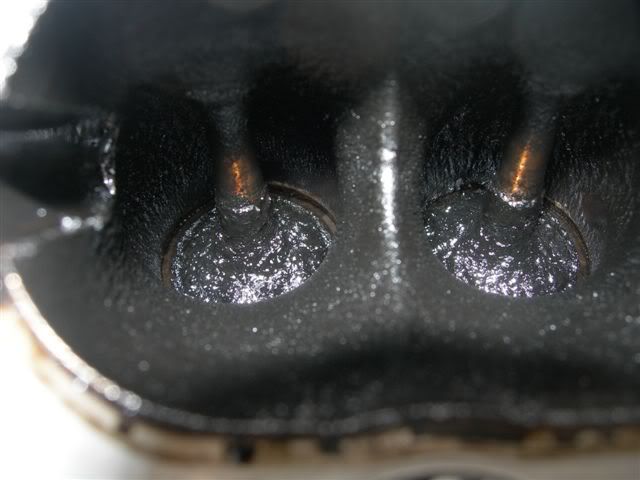 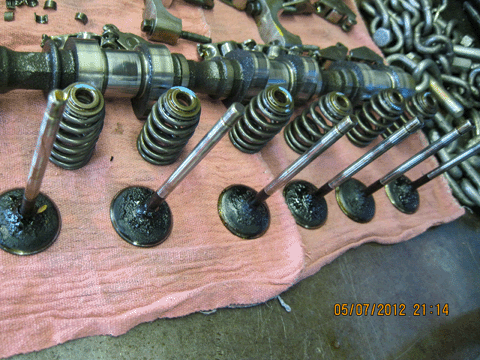 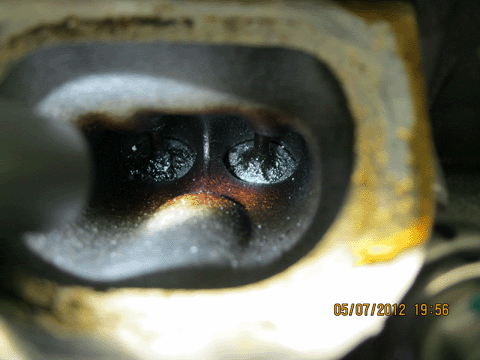 and the same 3.6L non DI with over 100k miles on it with port injection (the LY7): 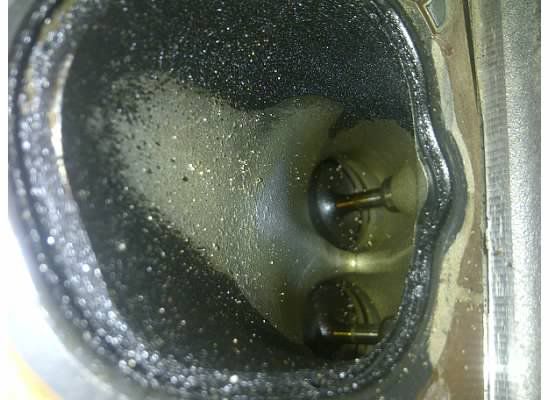 With DI no fuel passes the intake valves, so it is impossible to not have the coking unless running an effective catchcan such as the RX. Here is the best thread to read all about every article: http://www.camaro5.com/forums/showthread.php?t=265217 Read ALL 8 pages to see all the documentation you could want on this subject. Understand, NO manufacturer admits to the extent this is an issue, but anyone tearing these down see's it first hand. And, if you have a maggie or any top mount SC this is what the intercooler looks like after 15k miles w/out a good catchcan: 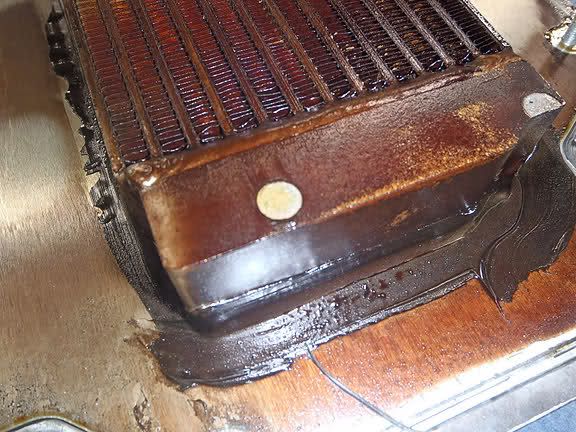 and the Zl1 blower with 16k miles and the RX catchcan installed from the beginning: 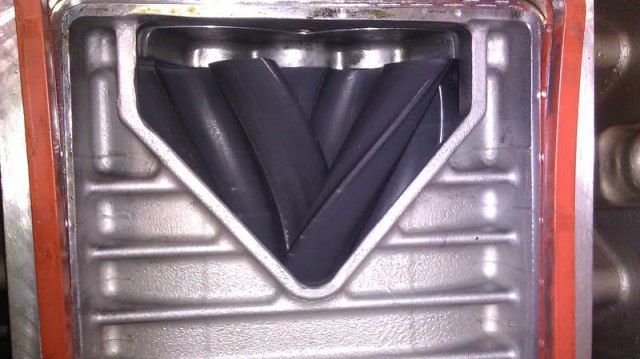 Anyone doubting the need, stop in and we will remove your intake manifold at no cost and show you your valves and how bad they are....then rethink the spin put out by the talking heads.  
|
|
|

|
|
|
#5 |
|
Trust me I'm a Scientist.
|
yes its nasty in there when I cleaned my throttle body and my birthday is next weekend and I would love to have a discounted TB! so me and my car would see more years together! hehe
__________________
"From ZERO to a Tire-Burning HERO!"
Mods: RotoFab CAI, SW Headers, HiFlo Cats, Borla Atak Catback, Nightfury Cam, Ported Heads,Intake,TB, melling pump, Morosso Oil Separator. |
|
|

|
|
|
#6 |
     Drives: '12 2LT Convertible Join Date: Mar 2012
Location: Belmont, California
Posts: 1,701
|
I became weary of reading the "catch can is not needed" & "catch can is needed" arguments in posts on this forum and other Internet sites.
So I took my intake manifold off to take a look at my valves / air intake ports and clean them if necessary. It WAS NECESSARY. My engine went 14K miles before the catch can. There was significant carbon and oil buildup. I posted a DIY in the DIY section so you can perform this inspection yourself. I would ask with all due respect to fellow forum members that no one post another "catch can is not needed" thread/post until you take a look at your own valves & air intake ports in your LFX engine. Don't take my word for it. Don't take Tracy's (SC2150) or Steve's(Elite Engineering) word either. Look for yourself.
__________________
Mods: GM Locking Gas Cap, RS License Plate Frame, SS Brembos, ZL1 FrontEnd, 14/15 Convertible Top
 |
|
|

|
|
|
#7 | |
           Drives: 11 F150 EB/13 Sonic RS/15 Z06 Join Date: Sep 2010
Location: Little Rock, AR
Posts: 7,129
|
Quote:

__________________
New Ride -- 2015 Z06 2LZ (stock) -- Journal
Old Ride -- 2012 Camaro 2LT/RS (647 RWHP & 726 RWTQ) -- Build Thread |
|
|
|

|
|
|
#8 | |
   |
Quote:

|
|
|
|

|
|
|
#9 | |
            Drives: 16 Camaro SS, 15 Colorado Join Date: May 2009
Location: Jefferson City, Missouri
Posts: 13,943
|
All I know is, is that oil is getting back into the intake, which means its eventually getting pulled down onto the valves and likely getting burnt and caked on them. I'm no engineer, but that oil in the intake has got to be going somewhere, and with nothing spraying on the valves to clean them off, I don't know how they could stay clean.
Thats what I'd love a GM engineer to come here and explain to us, but until then, I don't see what a catch can can hurt if used properly and if it is performing properly. Quote:
__________________
2016 Camaro 1SS - 8-speed - NPP - Black bowties
2010 Camaro 1LT V6 (Sold. I will miss her!) |
|
|
|

|
|
|
#10 |
|
Account Suspended
Drives: 2012 Camaro RS, RX supercharged Join Date: Dec 2009
Location: Bradenton, FL
Posts: 6,063
|
No manufacturers engineer can make any statement in public. Only the carefully scripted releases. The engineers at GM and every auto manufacturer are some of the best in the world, and are all (the ones involved in the actual engineering side, not the interior or tail light guys/gals) well aware of the issue and the solutions, but all are bound to not make any statements publically on anything not first approved by legal, marketing, and management. If you look at the specs of the new DI LT1 engine for 2014, it has a "patent pending dome valve cover with integrated oil separator to help improve economy and reduce oil consumption". Looking at the technical drawings I think they are on the right track (like the 1LE cleanside separator) and predict it will reduce the ingestion by 20-40%. A step in the right direction, but not a solution. There really is no effective solution other than one of the few cans that catch, separate, and trap the oil before ingestion, and that adds another maintanance step (draining the can) so that wont fly with 99.9% of the car & light truck buyers.
Right on intensifi. Most will never take the time though to verify who is BS'ing, the masses want to beleive what they are told by the companies and not think about it again, but it is easy to see as you show in your thread. Again, anyone that stops in we will show you on your own car. And we always have these engines in different phases of tear down and rebuild to show more. 
|
|
|

|
|
|
#11 |
  Drives: 2017 Corvette Grand Sport 3LT Join Date: Oct 2010
Location: Center of the known Universe
Posts: 863
|
My old 10 SS LS3 PUMPED about 3 oz of oil into my CC every 500 miles.
GM wouldn't address the issue and cited 'allowable' oil consumption within specs. 'BS' I say and I'm glad I had a CC to catch all that oil and prevented it from being ingested. I no longer have that car but removed the CC and installed it on my ZED. At 1500 miles, it's already caught about 1/2 - 3/4 oz. If you have X-ray vision and can see inside the engine and KNOW that there are no internal problems, you may know that you do not need a CC. I do not have that ability so I am happy to purchase such cheap preventative maintenance and insurance. |
|
|

|
|
|
#12 | |
     Drives: '12 2LT Convertible Join Date: Mar 2012
Location: Belmont, California
Posts: 1,701
|
Quote:
http://www.camaro5.com/forums/showthread.php?t=288997
__________________
Mods: GM Locking Gas Cap, RS License Plate Frame, SS Brembos, ZL1 FrontEnd, 14/15 Convertible Top
 |
|
|
|

|
|
|
#13 |
     Drives: 2012 SIM 2LT/1970 Camaro Join Date: Nov 2012
Location: Near Minneapolis, MN
Posts: 1,578
|
My catch can is on the way, and I plan to pull my IM and visually inspect my valves (unless I can snake my borescope into position w/the IM on) before and after I Seafoam treat, and then again if I have to manually clean it.
Which I'm guessing I will. I'll take pics and post them.
__________________
All bleeding stops eventually -- 2012 2LT Auto w/sunroof -- My journal thread
Roto-Fab Intake & W/W Relocate Kit -- ADM Race Scoop -- Dynomax VT Axle-Back Exhaust -- Vitesse Throttle Controller RX Catch Can -- Drake Bowtie Delete -- JacFab Radio Face Cover -- LED Fog Lights -- LED Dome/Trunk/Plate Lights -- Gen5DIY Dash ABL -- Diode Dynamics Cupholder Lighting Wishlist: ACS T5 Splitter -- Hood Vent Mod -- Footwell/Door Pull/Homelink Button Lighting |
|
|

|
|
|
#14 |
          Drives: 2010 camaro Join Date: Aug 2009
Location: port st lucie ,florida
Posts: 4,273
|
amount of blowby is twice as bad in a boosted engine due to the harder acceleration, and more boost..also there are the ones that run cars hard and road race, the g force involved in road racing is entirely different then driving your car like your granma...the oil reacts similar to your body in the car without seatbelts on,,,i have seen some roadracing ls3 with oil dripping off the top of the tb after a day of racing
__________________
 |
|
|

|
|
|
|
|
 |
|
|